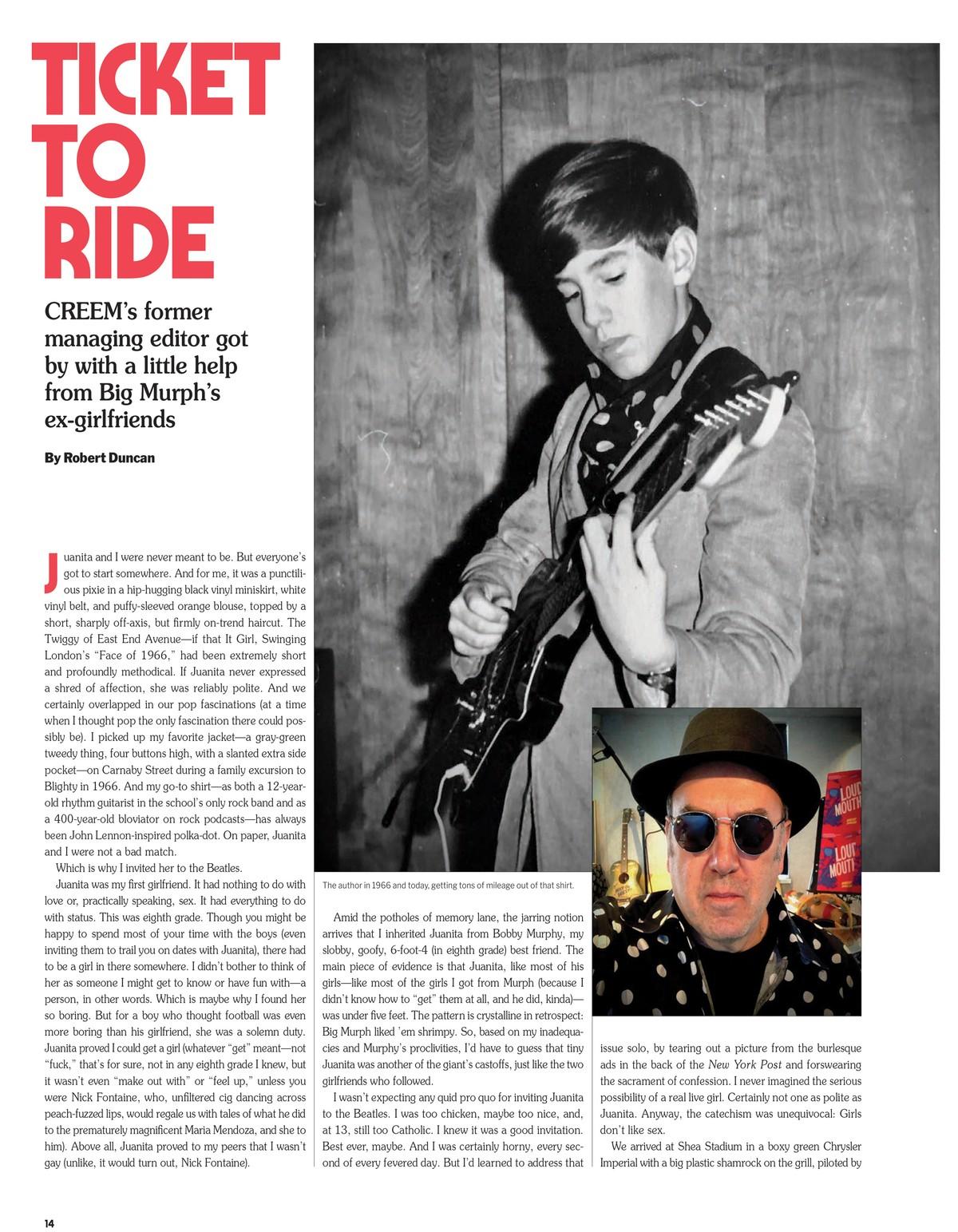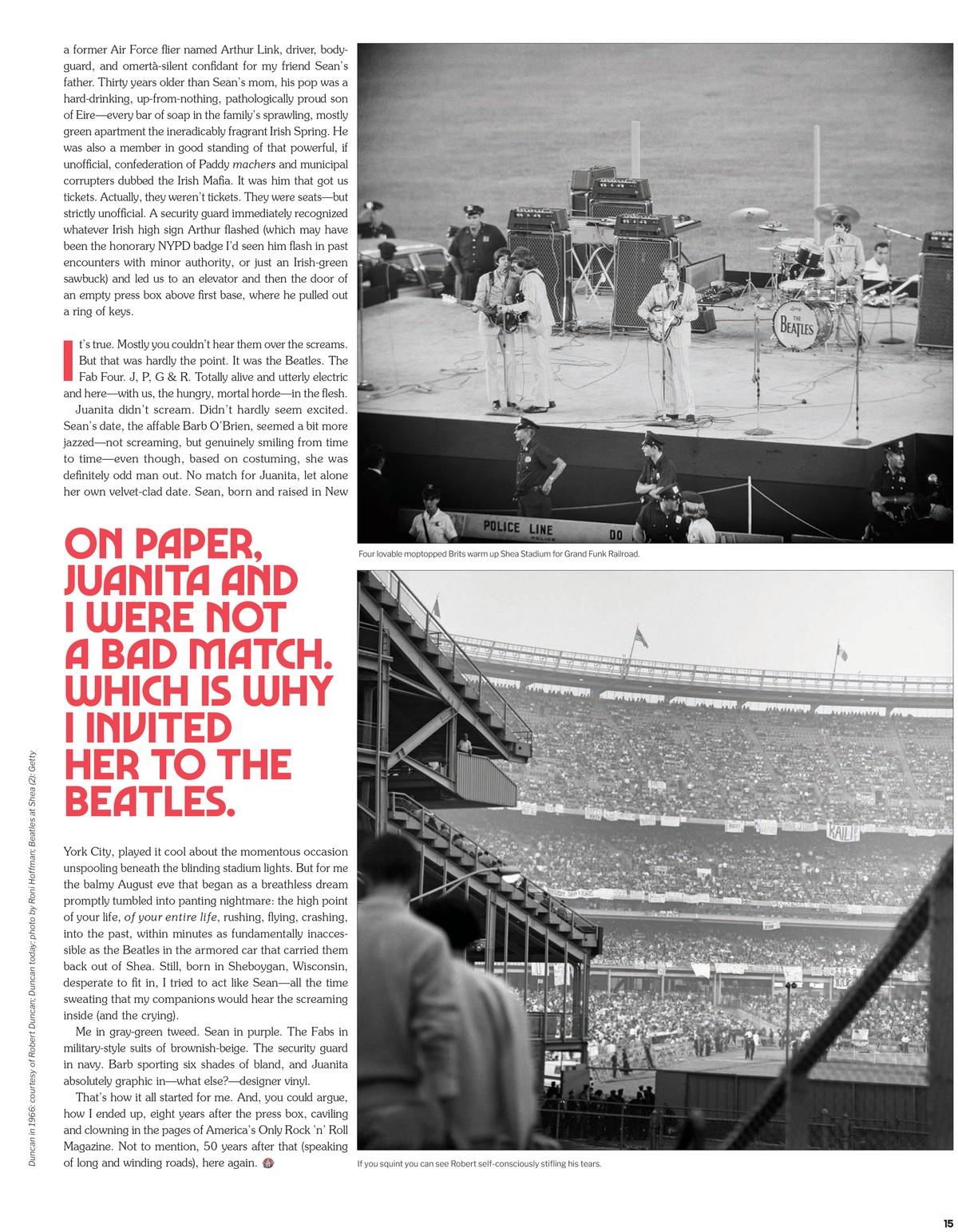TICKET TO RIDE
CREEM’s former managing editor got by with a little help from Big Murph’s ex-girlfriends.


Juanita and I were never meant to be. But everyone’s got to start somewhere. And for me, it was a punctilious pixie in a hip-hugging black vinyl miniskirt, white vinyl belt, and puffy-sleeved orange blouse, topped by a short, sharply off-axis, but firmly on-trend haircut. The Twiggy of East End Avenue—if that It Girl, Swinging London’s “Face of 1966,” had been extremely short and profoundly methodical. If Juanita never expressed a shred of affection, she was reliably polite. And we certainly overlapped in our pop fascinations (at a time when I thought pop the only fascination there could possibly be). I picked up my favorite jacket—a gray-green tweedy thing, four buttons high, with a slanted extra side pocket—on Carnaby Street during a family excursion to Blighty in 1966. And my go-to shirt—as both a 12-yearold rhythm guitarist in the school’s only rock band and as a 400-year-old bloviator on rock podcasts—has always been John Lennon-inspired polka-dot. On paper, Juanita and I were not a bad match.
Which is why I invited her to the Beatles.

